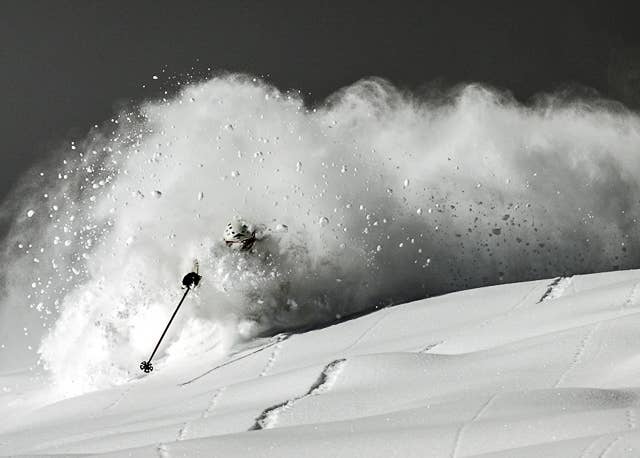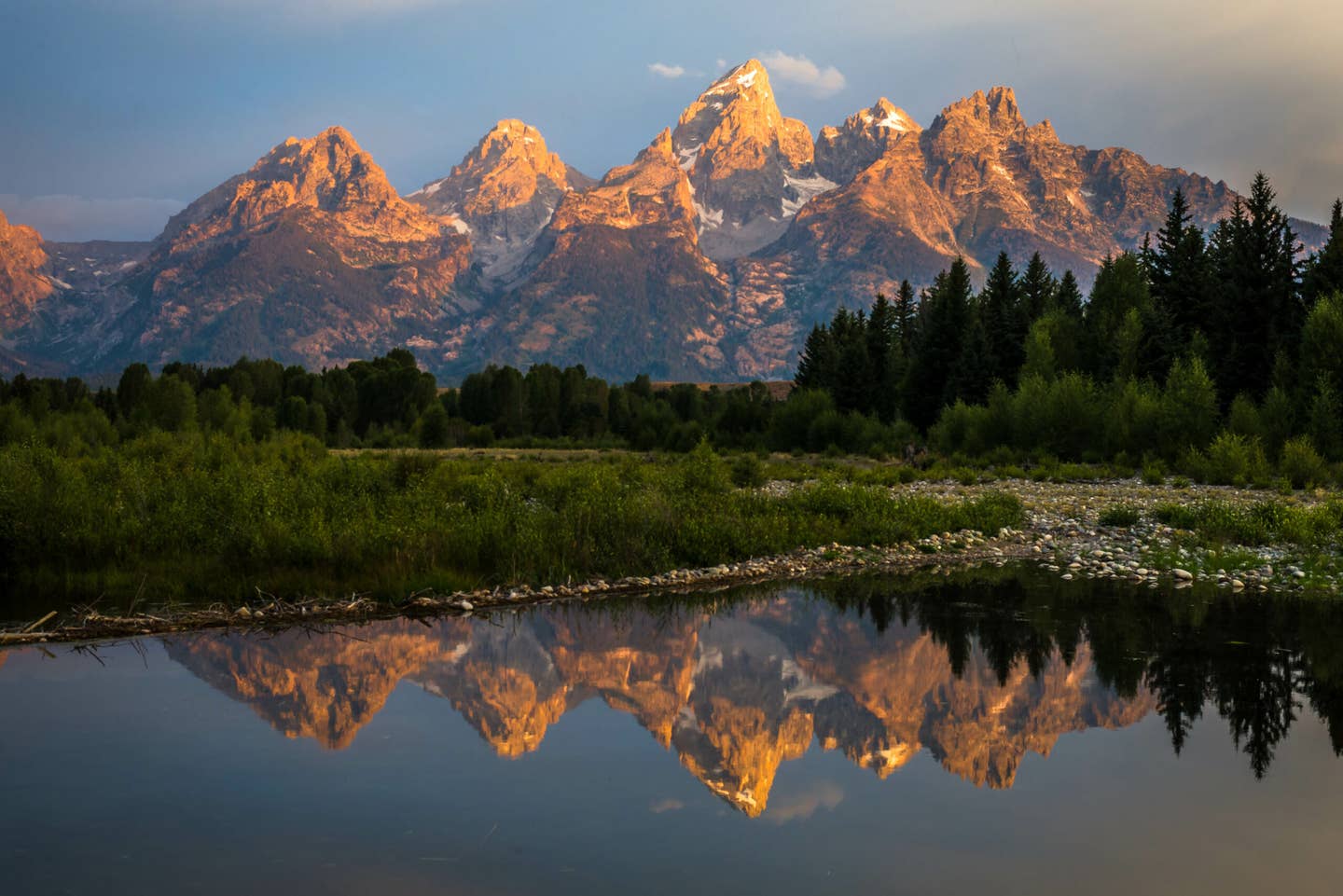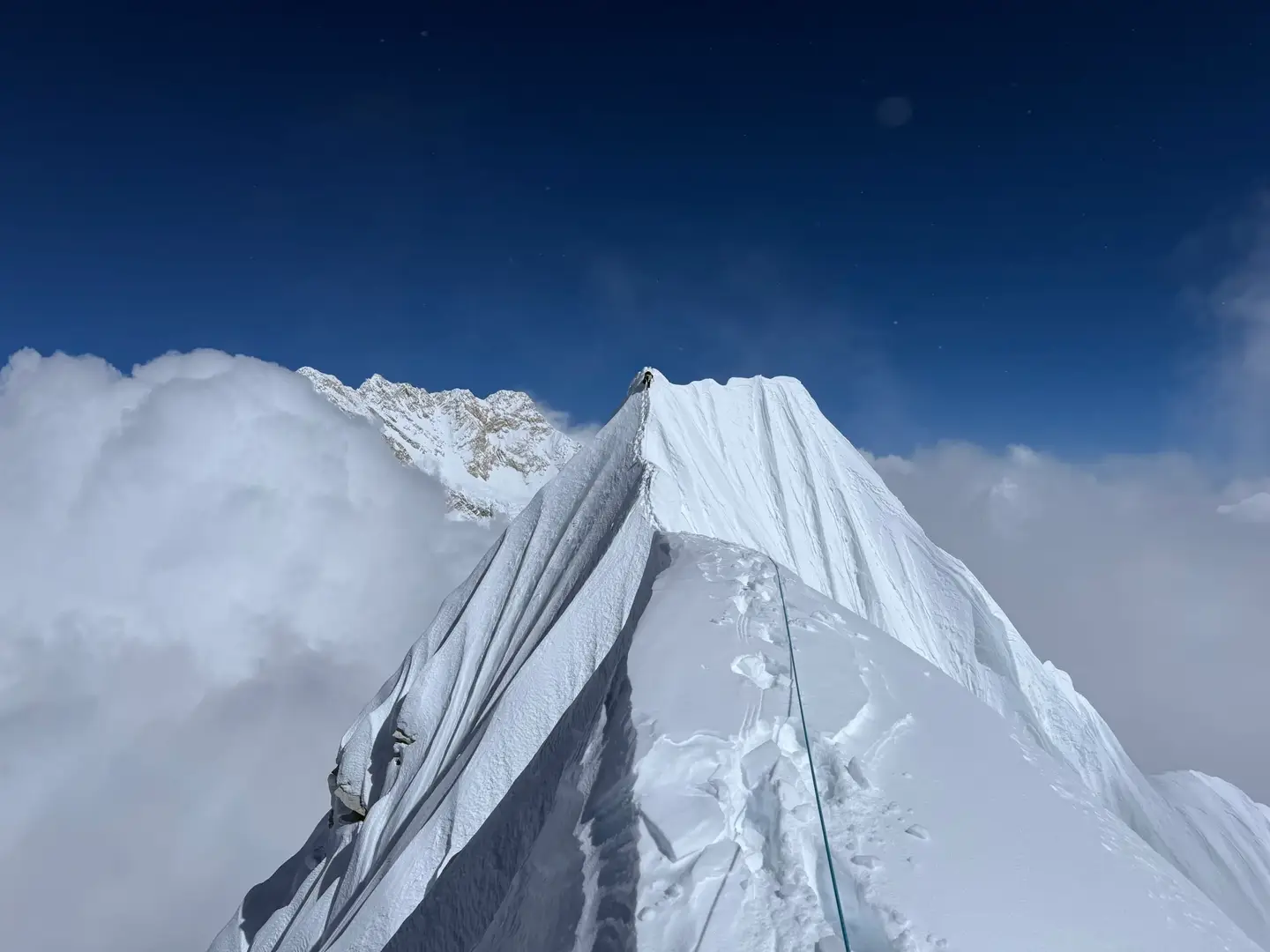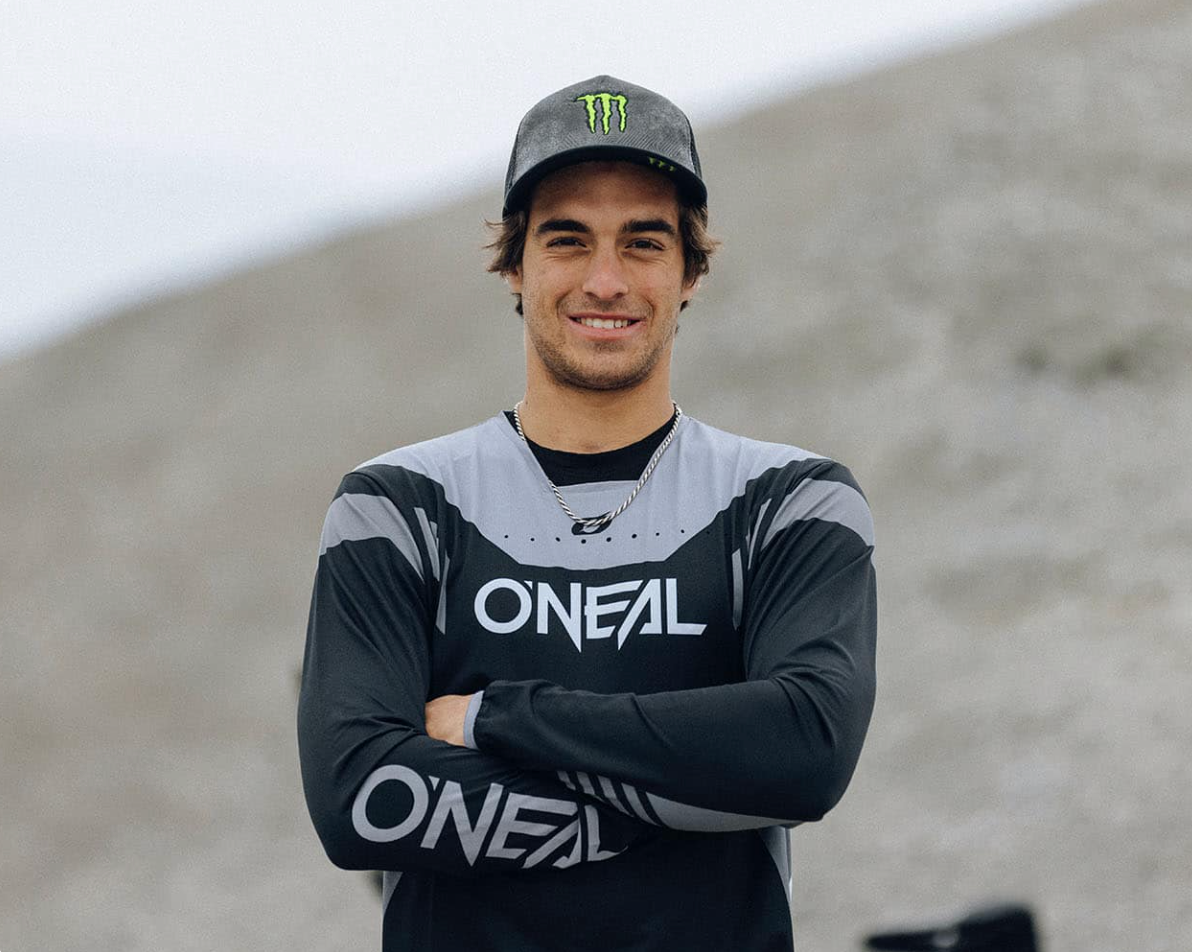

Op-Ed: How Social Media is Changing Sponsorships in Outdoor Sports, And Not For Good
Popular Stories
 Brock Butterfield is a bus-dwelling, road-tripping, multi-sport-sponsored athlete who has long pondered the relationship between social media and brand sponsorships. Brock Butterfield photo.
Brock Butterfield is a bus-dwelling, road-tripping, multi-sport-sponsored athlete who has long pondered the relationship between social media and brand sponsorships. Brock Butterfield photo.
My morning routine consists of two things: coffee, and Instagram. I need both to function for the rest of the day. I first set out to be a pro snowboarder five years ago. What I lacked in traditional means (trick bag, team manager ties, etc.), I made up for in marketing the hell out of any company willing to give me free gear. What I didn't foresee was how social media would become a huge part of my contracts and negotiations with brands down the road.
Some brands still give athletes the complete freedom of posting and tagging them as they wish. Others brands require daily posts of new photos–often without offering a photo budget–in order to generate traffic via the athlete’s tagging of said brands. These stipulations reward an athlete with money and/or gear and help to build brand recognition, but paradoxically, they also make professional athletes replaceable. This trend creates room for the new generation of hungry (potentially less-skilled) amateur athletes who will give away content for free.
I reached out to a handful of male and female athletes in both skiing and snowboarding to get a bigger idea of how social media has affected traditional sponsored athlete.
Why I Am Writing This
 Butterfield is sponsored by Grand Trunk goods. He attempts to keep his social media plugs authentic by only giving sponsor shout outs when it makes sense for the product. Selfie-ish shots like this tend to be more common when athletes don’t have the budget to pay pro photogs for their work. Brock Butterfield photo.
Butterfield is sponsored by Grand Trunk goods. He attempts to keep his social media plugs authentic by only giving sponsor shout outs when it makes sense for the product. Selfie-ish shots like this tend to be more common when athletes don’t have the budget to pay pro photogs for their work. Brock Butterfield photo.
Recently, I rejected a contract from a brand that has been around since the early days of snowboarding. It was taken over by a big box company that has been buying up a lot of snowboard brands. Last year this company gave me $1,500 for film budget and around $1,000 worth of gear.
This year, the contract was very different. No money to film, $500 worth of gear, and a longer list of requirements. The new sponsorship would require me to submit four photos per week (to be used
exclusively for the company’s social media channels) with no photo budget, as well as requiring me to write one blog post per month for their website. The contract was for a full year, meaning I’d have to get enough photos in winter to submit during summer. This breaks down to stacking eight photos a week in the winter to cover the summer months.
Not too many people understand that photos don’t just magically happen. There is an enormous amount of work that goes into getting “A” grade or even “B” grade photos. It requires the help and expertise of a professional photographer who is willing to start hiking at 6 am with their 50+ pounds of camera gear to set up for that perfect morning light. Then it’s up to the cold trigger finger of the photographer and the athlete to capture that perfect tweak, grab, toeside carve, or cliff drop.
If the perfect moment isn’t captured, then it’s back to hiking again. Even when all the stars align, you might get one or two usable shots that the photographer is going to try and sell to the athlete’s sponsors for ads or to publications for editorials. If an athlete wants to use a photographer’s photo, that photographer has to be willing to give it up for free (not likely), or the athlete has to have the budget to compensate the photographer. Not easy when your photo budget is $0.
The alternative is a captivating landscape photo or selfie, as it’s hard to be both the photographer and the athlete. Those types of photos are easier to capture, but sometimes harder to keep the follower engaged.
When I voiced my concerns, the team manager explained that the company had plenty of younger interested amateurs who were willing to sign this contract without any dispute. Younger groms that still live at home with the support of Mom and/or Dad.
My response? “Best of luck.” My sanity and enjoying the mountains is worth more than $500 in gear.
On the flip side, I’ve received a contract from another company that rewards me for submitting photos and posting on social media. Currently, this is with only one sponsor, but perhaps this will become the norm. For $150 a month and $500 in gear each year, I’m required to submit one photo per week. This brand upped the ante and also gave me an exclusive promo code that I can give out to followers, family and friends that gives them a 20% discount on their gear and rewards me with a 10% commission off the total sale. Now that makes much more sense to me.
How Social Media Works (Or Not) For Skiers
 Julian Carr is both a sponsored skier and founder of Discrete, a clothing company which does sponsoring of its own. He recognizes the importance of well-leveraged, appropriate and organic brand plugs on social media outlets such as Instagram. Will Wissman photo.
Julian Carr is both a sponsored skier and founder of Discrete, a clothing company which does sponsoring of its own. He recognizes the importance of well-leveraged, appropriate and organic brand plugs on social media outlets such as Instagram. Will Wissman photo.
Julian Carr, founder of Discrete, is sponsored by eleven big name brands and has had several parts in Warren Miller movies. Carr says he has no problem working his social networks, since he keeps it fun, true to himself, and limits himself to content he’d post anyway.
“I'd say it has connected me to a very cool audience, people that are big fans of the mountains; people pretty much people like me,” Carr said. “I see it as an extension of my personality, so to me, it's not really a responsibility or even a professional equation, it's just having an authentic voice. I decided to view it as a tool and to have fun with it, just like I would in real life.”
Discrete also sponsors athletes, so Carr understands the extreme value of athletes who are able to promote the brand tastefully and with an authentic voice.
“I market Discrete through intentional leveraging of our athletes’ networks, and it's certainly part of our athlete selection process,” Carr explained. “I've seen firsthand the power of leveraging my own network as an athlete for exposure. It's effective. But it takes a certain type of athlete that understands how to tastefully promote with an authentic voice.”
 Discrete founder Julian Carr is a big fan of social media-heavy athletes like Kalen Thorien, who "[has] a great individual voice that embodies adventure, intelligence, humor and value in how they align with their sponsors.”
Discrete founder Julian Carr is a big fan of social media-heavy athletes like Kalen Thorien, who "[has] a great individual voice that embodies adventure, intelligence, humor and value in how they align with their sponsors.”
Discrete athletes who are prolific Instagrammers–people like Max Lowe, Brody Leven, Kalen Thorien and Amie Engerbretson–have that kind of voice.
“I'm just a fan of what they're up to,“ says Carr. ”The four of them have great individual voices that embody adventure, intelligence, humor and value in how they align with their sponsors.”
How The Game Is Different In Snowboarding
 Butterfield is sponsored by Never Summer, a skate and snowboard company based in Colorado. As Butterfield has learned, the relationship between sponsorships and social media is more complicated than gear + photos + social = $$. Brock Butterfield photo.
Butterfield is sponsored by Never Summer, a skate and snowboard company based in Colorado. As Butterfield has learned, the relationship between sponsorships and social media is more complicated than gear + photos + social = $$. Brock Butterfield photo.
Veteran pro snowboarder Chris Coulter was part of a crew who were some of the first to post A-grade content on social networks as the content happened. Until this point, many athletes were waiting until the following fall to make their posts.
“I remember working with Nico Nolan, Andrew Miller and Wyatt Caldwell one spring in Alaska 2009,” said Coulter. “We were flying with SEABA getting shots for the Levitation Project. We were posting A+ shots from that day on Facebook and on the Levitation Project blog. At that time, most people were not putting A+ images online right away.”
As Instagram grew, that immediacy and authenticity quickly became the norm.
Sign Up For Our Newsletter
“Within two years of Instagram starting, it was taking over,” Coulter said. “It's truly amazing how social media has changed the creative outlets and options we have as snowboard artists. As artists marketing ourselves, it’s good to be wondering what’s next. We need to be ready and flexible so we can stay relevant. Social media gives you freedom to tell your story.”
This shift in how people were serving and consuming media gained momentum quickly. When Instagram immerged on the menu, it gained stardom like the McRib. Its user base grew to 150 million monthly active users in
half the time that it took Twitter to get to the same number of users, and knocked two years off of Facebook’s timeline for achieving the same benchmark. But while the platform’s success (and its benefits to riders and sponsors) skyrocketed, it also coincided with a flattening of sales, and therefore budgets, in the snowboard industry.
“Social media blew up so fast that companies could get away with requiring a lot from athletes without the athletes really knowing if it was fair or not, and where to draw the line,” says Jones Snowboards team rider Iris Lazz. “I think [that requirement] is becoming more clear now, but the decrease in compensation is rough.”
Compensation for athletes these days can mean a few different things. It can come in the form of a film and travel budget for the season, a certain dollar amount worth of gear, or photo and video incentives where athletes get paid a fixed amount for making appearances in editorials, ads or videos. Most of those incentives now require that the sponsor’s logo be clearly visible in order to get paid out.
Sammy Luebke claims he’s seen a decrease in pay for athletes, and more requirements. He spoke about how, despite film budgets being reduced for established riders, the world of social media has opened up a “channel for no-name kids to blow up almost overnight.”
“There has been a big decrease in industry money. But there are lots of kids willing to shred for companies for nothing,” he added.
As a sponsored athlete, groms still living with Mom and Dad are willing to gain Instagram stardom in exchange for some free gear is a scary thing to think about. Granted they are trying to work toward that fully paid sponsorship but with the next generation behind them it becomes more of a fairytale then a reality.
Groms should consider counter offering with a way that helps them climb up the ranks each year and get more than just free gear. With big box CFO’s starting to run our favorite timeless brands, I’ve seen firsthand the slash of marketing budgets and capitalizing on this younger generation of athletes who just want to increase their likes and followers.
How Authentic Are Sponsor-Focused Instagram Photos, Really?
 Organic product placement is crucial to successful sponsored posts; if an item doesn't make sense in the visual context or it seems forced, it steals legitimacy from both the athlete and the brand. Brock Butterfield photo.
Organic product placement is crucial to successful sponsored posts; if an item doesn't make sense in the visual context or it seems forced, it steals legitimacy from both the athlete and the brand. Brock Butterfield photo.
A company giving an incentive to talk about and help promote a product makes sense to me, but it leads to a slippery slope. It’s a balance to make sure it doesn’t seem like you’re just posting things for sponsors. Our followers started following us because of the original content and adventures we began with. Posting nothing but tagged and plugged sponsor products could lead to a drastic unfollowing.
I reached out to Andy Earl, social engagement expert for Goal Zero, to speak on how they make sure they keep things authentic.
“Nobody likes seeing overly forced product marketing in their feeds. If you do that to people, nobody ends up stoked,” Earl said. “When we sponsor a project or an athlete, we work really hard to work with people that align with our values. That way, we know the people are stoked on us and that we are stoked on them representing our brand. We’ve learned that putting requirements on people for posting loses authenticity. One legit story or post is worth way more than 20 forced posts. We want to be a part of the story for sure, but only where it makes sense.”
It makes much more sense for athletes to work with companies that want to keep the athlete voice authentic and compensate us for the occasional plug. The brands that understand the degree of influence athletes can have with their social media marketing also usually understand that our time is valuable. They want to reward us for taking the time to post and tag them when appropriate.
“A company might put up some money for a travel budget on a film trip and you, in exchange, will likely contribute the more social media posts and tags to this company than other sponsors that had no monetary involvement in that trip,” said pro skier Giray Dadali. “If other sponsors gave you product, they'll be represented visually by you wearing their product in the shots. But any sort of callout, or additional social media posts, at this point in my career, requires monetary compensation.”
Some companies such as Mizu see the true value in social media posts from athletes and approach it differently. They allow their team to post as they see fit.
“We have a huge mix of athletes, photographers, and explorers in our crew, and all our advocates and family are there (to) support us and our mission,” Mizu founder Jussi Oksanen explained. “We don’t put any requirements on anyone. The product needs to fit in the life naturally. That way they are able to feature it organically.”
The balance for athletes will then be in finding those days on the mountain to update your mental status of face shots rather than updating Facebook, to tweak as opposed to tweet and to drop cliffs instead of dropping ‘Grams.
Cover photo: Julian Carr, pro skier and founder of Discrete clothing shreds at Alta Ski Area. Will Wissman photo.



